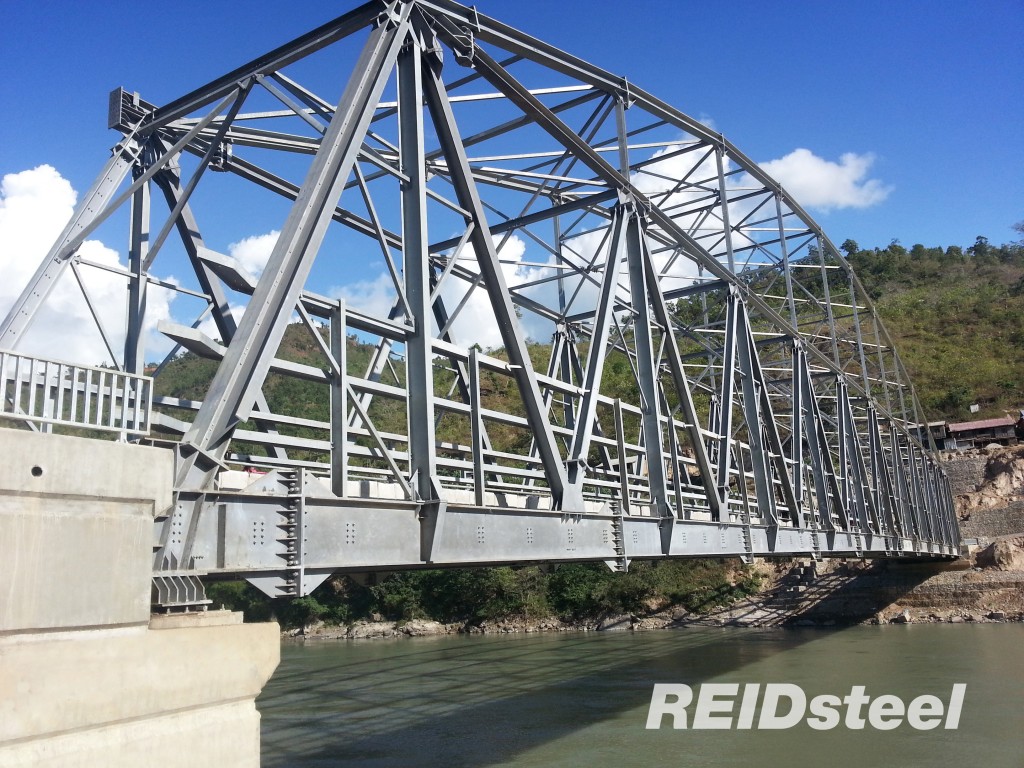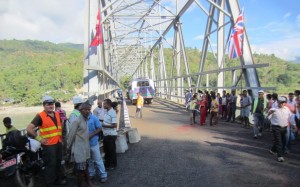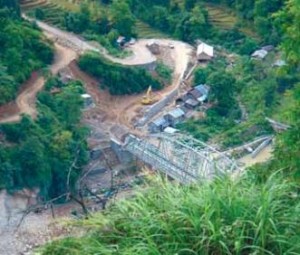 Home to the highest point on earth, Mount Everest and the birthplace of Gautam Buddha, Nepal is an ancient and beautiful country.
Home to the highest point on earth, Mount Everest and the birthplace of Gautam Buddha, Nepal is an ancient and beautiful country.
Today, its people are looking to the future – The UK is helping by providing aid from the Department for International Development (DFID) and working with IMC Worldwide to support the Nepalese people in gaining reliable infrastructure.
The work is coordinated by Tim Stiff, of ICMW, acting as Team Leader for the Rural Access Programme, RAP2, and reporting back to the British government.
The only way for the country to advance and eliminate rural poverty is to build roads and bridges. Nepal’s total road network and density are low and only 43% of the population has access to all-weather roads.
As part of the Worldbank’s Road Sector Development Project (RSDP), REIDsteel had been asked to design, manufacture and erect three bridges; the Piluwah Khola, Sabu Khola and Arun Khola. In Nepali, ‘Khola’ means stream, which does not quite translate as the smallest of these bridges was 96m long!
The first two bridges were completed earlier this year and we are pleased to announce that the Arun Khola Bridge opened for traffic just a few days ago.
Situated in the Arun valley at Leguwaghat, Dhankuta, the Arun Bridge is a single 120m-span Road Bridge. It is constructed from paraboloid trusses complete with 6m wide carriageway and a 1m raised footpath on one side. The structure was hot dip galvanised for long life and low maintenance.
The average timespan for a bridge to be built in Nepal is five years. Kathmandu-based company, Kalika spent just ten months erecting from beginning to end; or rather, from both ends to the middle.
This speed was partly due to a lot of pre-planning and the provision of equipment designed and manufactured by REIDsteel to allow construction over a fast flowing river with no access into the river bed; and with a steep cliff approach at one end and a flat floodplain the other side.
It was inevitable that there would be difficulty transporting construction materials and tools to the site. To overcome this, REIDsteel’s shipped the bow-string bridge as unassembled metal members and crates of small parts and accessories which fit precisely into 20ft and 40ft containers. These were unloaded then taken in agricultural trailers along the narrow and muddy tracks of Nepal.
The bridge is built on well foundations 16m deep on both sides of the river and is designed to last 100 years, being earthquake and flood resistant. This is achieved by the inclusion of expansion/shrinkage joints at either end to allow thermal and seismic movement, and the central bracket’s web is torsionally flexible and ductile enough to allow the connecting struts to move with the thermal movements of the bridge.

Designed by Peter Mrozinski and drawn by Kevin Williams.

 Slow growth in Nepal’s exports and difficulty moving home-grown agricultural products around the country to reduce dependence on imports are getting a boost from steel bridges that are designed and built in the UK.
Slow growth in Nepal’s exports and difficulty moving home-grown agricultural products around the country to reduce dependence on imports are getting a boost from steel bridges that are designed and built in the UK. The bridge links Sankhuwasabha with the national road network and has the potential to transform the lives of 800,000 people – The river runs through the Arun Valley, one of the deepest in the world at 300-435 metres.
The bridge links Sankhuwasabha with the national road network and has the potential to transform the lives of 800,000 people – The river runs through the Arun Valley, one of the deepest in the world at 300-435 metres. However, REIDsteel has almost 100 years’ experience of building bridges around the world and the company completed a similar, slightly smaller 96 metre bridge in the region in 2011.
However, REIDsteel has almost 100 years’ experience of building bridges around the world and the company completed a similar, slightly smaller 96 metre bridge in the region in 2011. The satisfaction of getting through the build stages and seeing the finished bridges is immense.
The satisfaction of getting through the build stages and seeing the finished bridges is immense. As taken from the Royal Engineer’s Journal, this articles discusses the contstruction of a bridge in Nepal. Click to read the article
As taken from the Royal Engineer’s Journal, this articles discusses the contstruction of a bridge in Nepal. Click to read the article 







